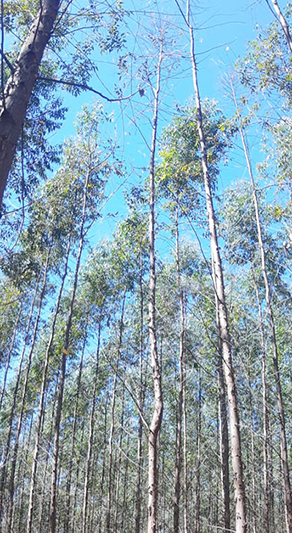Boron deficiency in eucalyptus

Similar symptoms of boron deficiency have been recorded on a number of eucalyptus species (Eucalyptus grandis, E. citriodora, E. cloeziana, E. torelliana, E. saligna, E. resinifera, E. tereticornis, and E. alba). However, there are indications that species differ in their requirement for boron. For example, E. grandis appears more susceptible to boron deficiency than E. cloeziana.
The first typical symptom is the crinkling and discoloration of the young, unfolding leaves. The buds, which are brittle, die and the lower leaves in the upper crown often become discolored and fall. In some species the leaves become a reddish purple, but in others a yellowing takes place. Normally the discoloration progresses down the tree in advance of the dieback. A bark necrosis can later be expected to start at the buds and progress down the stems, resulting in a gradual dieback.
Boron deficiency is known to reduce the frost hardiness of eucalyptus.